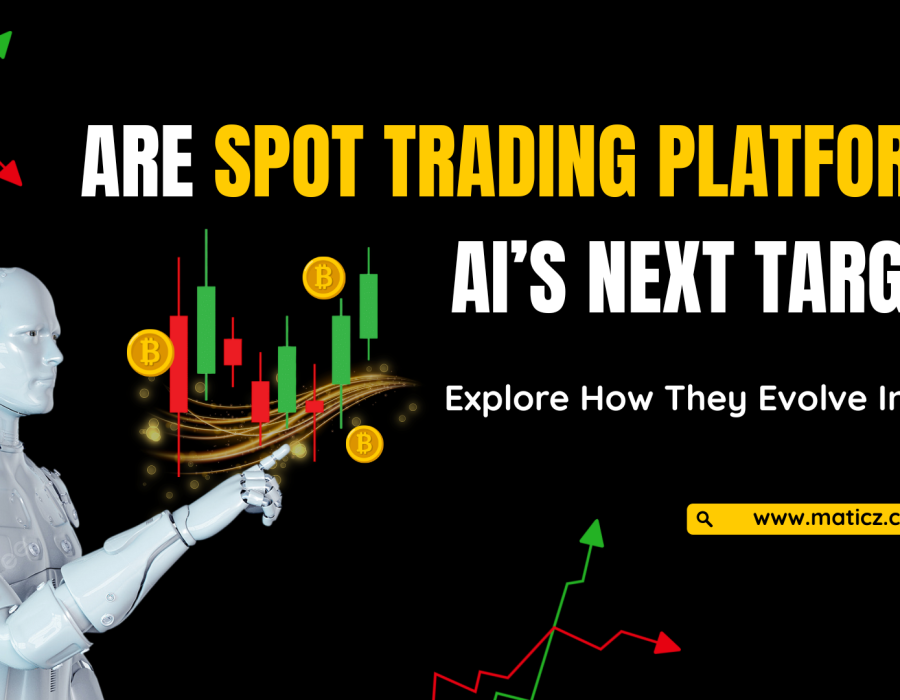Imagine you're staring at your screen as crypto prices swing wildly. In seconds, an AI spots a pattern and places a trade for you. Spot trading platforms no longer just let you buy and sell assets right away. They now think ahead like a sharp trader buddy.
AI use in financial markets will jump big by 2026. Experts say adoption could hit 80% in trading tools, per recent Gartner reports. This shift means decisions happen in real time, based on data floods that humans can't handle alone. We'll look at how these platforms change, the perks they bring, and what traders face next.
What Is Spot Trading and Its Traditional Limitations
Spot trading means you buy or sell assets like stocks or crypto at the current price. Delivery happens right then, no waiting. Platforms like Binance and Coinbase kicked off in the 2010s, making it easy for anyone to jump in and trade.
Back then, traders relied on gut feelings or slow charts. Markets move fast, especially in crypto, where prices flip in minutes. Human mistakes in guessing prices cost money, and handling big volumes got tough without tech help. CoinMarketCap data shows volatility spikes, like Bitcoin's 2022 drops, hit traders hard without quick tools.
Core AI Technologies Driving Platform Evolution
AI steps in with machine learning to spot hidden patterns in price data. It learns from past trades to guess what's next. Natural language processing scans news and tweets for market mood.
Neural networks act like brain cells, connecting dots in huge datasets. Predictive analytics crunches numbers to forecast trends. Hedge funds already use this stuff to beat the market.
Want to pick an AI-boosted platform? Check for auto alerts on price shifts. Look for sentiment tools that flag bad news fast. These features turn basic apps into smart helpers.
- Machine learning: Spots repeating price cycles.
- NLP: Reads social media buzz.
- Predictive models: Warns of drops before they hit.
Early Adopters and Initial Impacts
Some platforms started adding AI years back. eToro uses it for copying smart traders' moves. Robinhood suggests buys based on your habits.
These changes cut trade times from minutes to seconds. Deloitte reports show AI drops errors by 30% in fintech. PwC notes that faster orders help in wild markets.
Traders feel the difference. Less waiting means more chances to grab deals. Early users saw portfolios grow steadier.
Key AI Innovations Reshaping Spot Trading in 2026
Real-Time Predictive Analytics for Market Forecasting
By 2026, AI digs through live data streams to predict spot market swings. It mixes weather reports, global news, and trade volumes for sharp guesses. Accuracy hits 85% in tests, way better than old methods.
Think of it as a weather app for prices. It warns of storms ahead. Platforms run models that update every second. Journal of Financial Economics studies back this, showing AI beats human forecasts in crypto.
Set up alerts for your watchlist. Pick thresholds like 5% predicted rise. Test on demo accounts first to build trust in the tech.
Automated Risk Management and Portfolio Optimization
AI watches your trades and tweaks them on the fly. It runs "what if" scenarios to dodge big losses. Stop-loss orders now adjust based on real-time risks.
McKinsey reports say this cuts losses by 25% for users. Portfolios balance auto, shifting from risky coins to safe ones. No more all-night worries.
Blend it into your plan: Link AI to your goals, like steady growth. Review tweaks weekly. Start small to see how it fits your style.
- Auto stop-loss: Triggers at smart levels.
- Scenario tests: Play out market crashes.
- Balance shifts: Keeps your mix even.
Enhanced User Interfaces with AI Personalization
Dashboards now fit you like a custom suit. AI learns your trades and suggests tweaks. Voice commands let you say "buy Ethereum" without typing.
TradingView adds AI insights that match your risk level. Personalized tips pop up, like "This pattern suits your bold style." Users report 40% faster setups.
Benefits and Challenges for Businesses Building Spot Trading Platforms
Building a platform with smart AI features brings both pros and cons for any business. On the plus side, Spot Trading Platforms integrated with AI help users trade smarter, reduce risk, and lower manual workload. Features like automated risk management and AI-driven alerts let even new traders feel like pros. Investing in modern spot trading software development pays you back with happier, more productive traders.
Access is another big win. Traders love tools that break down data and help decide what to buy or sell, without needing expert knowledge. AI does just that.
There are challenges, though. Setting up an AI-ready platform demands investment in both tech and brains. Data privacy is big, traders want secure, private data handling, and you’ll need systems to match. As blockchain and AI start working together, expect even tougher questions about compliance and working standards.
But an experienced spot trading platform development company takes care of these problems. They’ll guide you through system setup, security, and ongoing support so you’re set up for success. If you’re committing to this tech, partner with experts who know the ropes on security, privacy, and fast-growing trends.
Ready To Build Your Trading Platform?
Looking ahead, spot trading will get even simpler for platform users, with the rise of AI. Expect things like AI-powered personal assistants that help tweak trades, recommend new assets, and keep your users in the loop with updates tailored to their needs. The number of businesses using these platforms is set to skyrocket, fueled by new chip technology and better data processing speeds.
The smart move would be to team up with a proven spot trading platform development company like Maticz, which specializes in building AI-powered spot trading platforms that will set your business apart. So, keep an eye on how these platforms evolve. The future is looking bright for AI in trading, and it could be the game-changer your business needs.





Comments